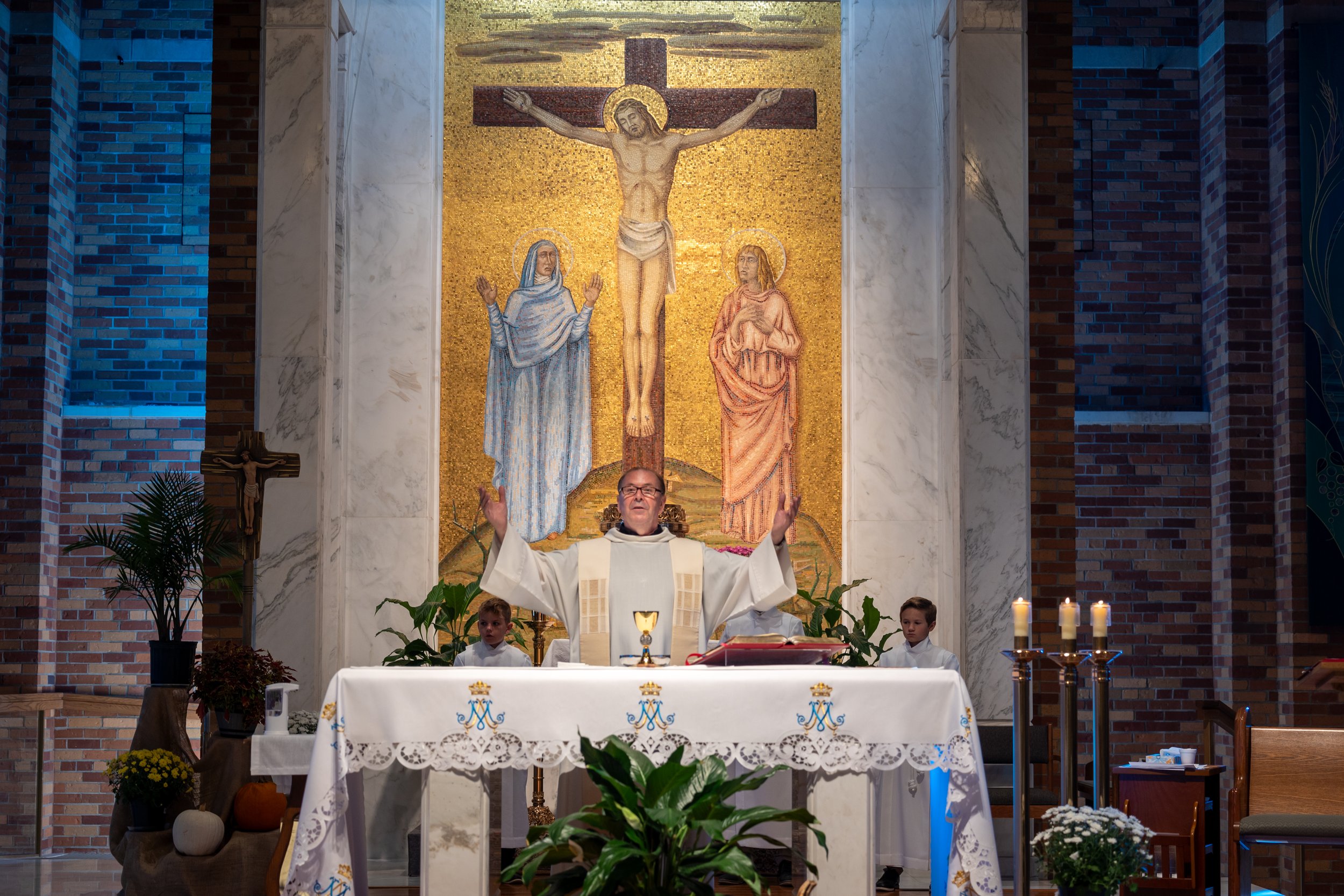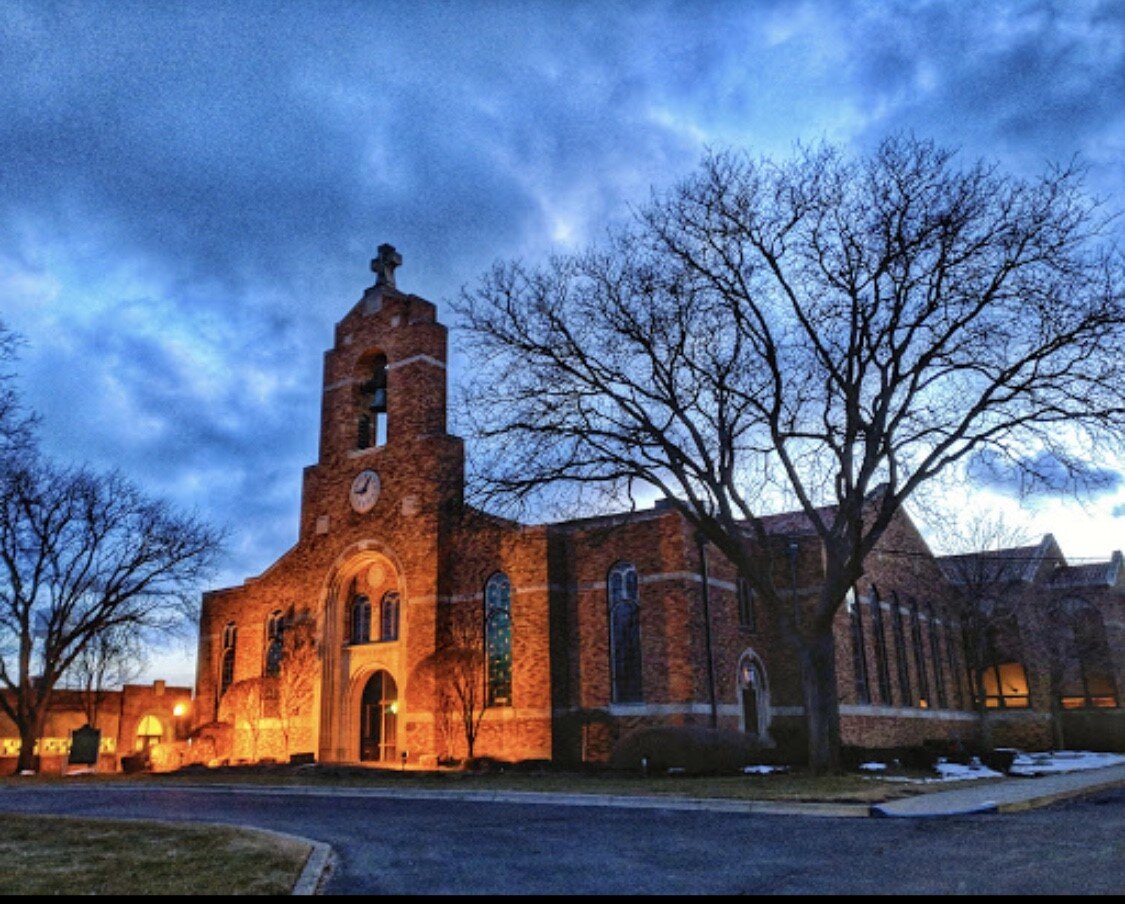GET YOUR TICKETS EARLY FOR THIS AMAZING EVENT AS TICKETS WILL SELL OUT!
********************
CLICK HERE FOR ST. LAWRENCE YOUTH GROUPS
********************
CLICK HERE FOR SERVICE HOUR OPPORTUNITIES FOR CONFIRMATION.
Church History
In May 1866 the Reverend Amandus VanDenDriessche of Detroit recited Utica’s first Catholic Mass. Forty Irish families at Utica Junction (present-day Roseville) formed what became a mission of Sacred Heart Parish. On August 15, 1874, Bishop C. H. Borgess dedicated St. Lawrence Parish’s first church. Four years later a cemetery was consecrated one-half mile north of here. In 1904 a fire swept through Utica, destroying the church. Parishioners worshiped in homes and a rented hall until a new church was built in 1908. The present Neo-Romanesque church was designed by Detroit architect Arthur DesRosiers and erected in 1951. The broad nave seats 800 people. St Lawrence Parish remains the oldest religious community in Utica.
Present Church
The 15-acre complex of St. Lawrence Church consists of the present church, rectory, school and cemetery. The parish grounds are located in the southwest border of the corporate limits of the city of Utica, bounded by Utica Road and Greeley Street. The church grounds are nicely landscaped and blend harmoniously with the surrounding area which consists of both residential and industrial but still has retained its local charm. Immediately to the south of the school is the St. Lawrence Knights of Columbus Hall (not a parish facility) which provides extra parking when needed as well as availability for social events. The church, rectory and school are all constructed in identical exterior appearance using the same type of brick and style of architecture. Its pleasing appearance has become a landmark in the community.
St. Lawrence Cemetery
The St. Lawrence Cemetery is on Auburn Road approximately one half mile from the parish complex. The land was deeded from George and Regina Arcenbroon to Bishop Borgess and in 1878 the cemetery was consecrated as St. Lawrence-Utica Cemetery. The oldest, legible marker is that of John Sullivan, dating back to 1887. Since then, adjoining land has been purchased; the cemetery now totals more than six acres, includes more than 3,000 graves and allows room for expansion. The parish cemetery is well cared for and is a source of early community history village landmark.
Church Construction
Saint Lawrence Church was built in Spanish-Romanesque style, corresponding to the buildings previously constructed. The structure is of fireproof construction, the walls being of solid masonry and the other structural members of concrete and steel. The beams are of fir, fourteen inches by twenty inches, reinforced at the joints with concealed steel plates bolted together with two-inch bolts. The ceiling of the church is three inches by twelve inch-grooved planking. The front of the church is of brick and stone. Above the clock an arch rises in which is hung a bronze bell, rung electrically from a switch in the priests’ sacristy. Above the arch which houses the bell there rises a large stone cross supported by a rugged stone base. The tower is sixty-five feet high and the cross is visible for many miles. At night, the two large lamp posts at the entrance of the church deflect light upwards, shedding light on the tower.
The interior, like the exterior, is of various colored Harvard bricks with five-inch sandstone banding around the interior and exterior. The main altar is plain, of white Georgia marble. Rising in a marble frame eight feet by thirteen feet is a colorful imported mosaic of the Crucifixion representing Our Lord on the cross, and at each side His Mother Mary and the disciple, Saint John. These mosaics were imported from Florence, Italy. The two side altars match the main altar. They are of the same design in white Georgia marble. Above the side altar are the wood-carved statues of the Blessed Virgin Mary and Saint Joseph. The carving of Saint Joseph is a rather unusual one representing him, not with the Christ Child but with the carpenter’s square in his right hand and the lily in his left. These statues were imported from France.
The tabernacle and candlesticks are bronze, the tabernacle being veiled also according to the liturgical colors. The candlesticks and sanctuary lamp are ornamented to harmonize with altar and tabernacle. The original light fixtures of the church were of Swiss wrought iron in satin finish, suspended by chains from the wood planking of the ceiling. Later, in 1984, new chandeliers were purchased from St. Rose Church in Detroit.
The original Baptistery was located just off the entrance of the church, under the balcony on the north side of the church. The Baptismal font was located in the center of the room, and Baptisms were conducted there. The font was also made of white Georgia marble.













